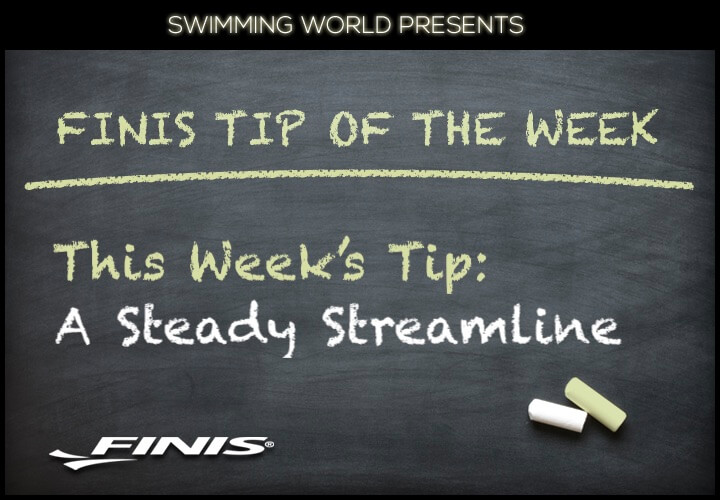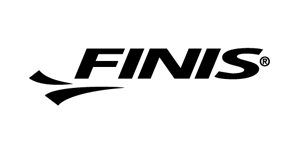FINIS Tip Of The Week: Staying Steady In Your Streamline

The Tip of the Week is sponsored by FINIS. Visit FINISswim.com for more information about our sponsor.
Welcome to the “FINIS Tip of the Week.” Swimming World will be bringing you a topic that we’ll explore with drills and concepts for you to implement with your team on a regular basis. While certain weeks may be more appropriate for specific levels of swimming (club, high school, college, or masters), each tip is meant to be flexible for your needs and inclusive for all levels of swimming.
The tip for this week looks at one of the first technical skills we learn as swimmers, the streamline. Every swimmer should know the basics of the streamline: both arms extended in front, hand over hand, with the arms and fingertips stretching in front of the body creating a torpedo shape.
But what is often forgotten with the streamline (even by experienced swimmers) is that the streamline does not end with your arms. You need to pay attention to what every part of your body is doing, from you head down to your toes, to have the most effective streamline possible.
Engage Your Core
A key part for a good streamline is to have your core engaged and active. We know that a streamline isn’t just a static movement off of the wall. You need to hold a tight streamline while you are kicking (including the transition from dolphin kick or flutter kick) and need to stay as long as possible through your first stroke to transition into an effective breakout.
If you are not thinking about keeping your core engaged, you are more likely to have a bad breakout from not being able to control your depth, a disconnected body line, and an overall weaker streamline. Keeping an active core from the moment you push off the wall will help to keep the body in line and give you more control over your depth and how you eventually will break out into your stroke.
An Invisible Head
A common cue for the streamline is to “squeeze your ears” with your biceps to keep your head in line. Often this can lead to the top of the head sticking out slightly above the rest of your body’s profile, creating extra resistance, or make it easy for the head to slip out of line with the rest of the body.
A better cue may be to have swimmers think about squeezing just behind their ears so that they are cradling their heads and putting their heads in a more natural position that is in line with their spine.
Legs Squeezed
This last tip applies more to your streamline off of the start than when you are coming off the wall or performing underwater kicks, but you want to remember to keep your legs engaged and tight from the moment you feet leave the block. Loose legs in the air can impact the quality of your entry and can decrease your speed from the get go, which is obviously something to avoid.
Think about squeezing your legs together from the moment you take off the block and connecting them with your core engagement so that you are entering through the same hole in the water on the start and keeping your whole body within the same profile as you start to move through the water. Happy swimming!
All swimming and dryland training and instruction should be performed under the supervision of a qualified coach or instructor, and in circumstances that ensure the safety of participants.





Quite out of the blue
Don’t see a reason not to share it